RIAT 2024 - The anniversaries of icons show
- Mike Lintott-Danks
- Aug 30, 2024
- 6 min read
The Royal International Air Tattoo (RIAT) 2024 was awash with anniversaries this year and many of them are icons of the world of airshows and air forces globally.
First on the list is one of the most prolific fight aircraft of the modern age. The General Dynamics F-16 Fighting Falcon, affectionately known as the ‘Viper’.

The F-16A, a single-seat model, first flew in December 1976. The first operational F-16A was delivered in January 1979 to the 388th Tactical Fighter Wing at Hill Air Force Base, Utah.The F-16B, a two-seat model, has tandem cockpits that are about the same size as the one in the A model. Its bubble canopy extends to cover the second cockpit. To make room for the second cockpit, the forward fuselage fuel tank and avionics growth space were reduced. During training, the forward cockpit is used by a student pilot with an instructor pilot in the rear cockpit.All F-16s delivered since November 1981 have built-in structural and wiring provisions and systems architecture that permit expansion of the multirole flexibility to perform precision strike, night attack and beyond-visual-range interception missions. This improvement program led to the F-16C and F-16D aircraft, which are the single- and two-place counterparts to the F-16A/B, and incorporate the latest cockpit control and display technology. All active units and many Air National Guard and Air Force Reserve units have converted to the F-16C/D.
The F-16 was built under an unusual agreement creating a consortium between the United States and four NATO countries: Belgium, Denmark, the Netherlands and Norway. These countries jointly produced with the United States an initial 348 F-16s for their air forces. Final airframe assembly lines were located in Belgium and the Netherlands. The consortium's F-16s are assembled from components manufactured in all five countries. Belgium also provides final assembly of the F100 engine used in the European F-16s. Recently, Portugal joined the consortium. The long-term benefits of this program will be technology transfer among the nations producing the F-16, and a common-use aircraft for NATO nations. This program increases the supply and availability of repair parts in Europe and improves the F-16's combat readiness.
The F-16 is a lightweight, multirole fighter capable of air-to-air, CAS, SEAD, interdiction, FAC-A, tactical nuclear delivery and all-weather strike missions.
The “Viper” makes up roughly half the fighter inventory, carries the majority of PGMs in service, and is one of the most maneuverable fighters ever built. The prototype YF-16 first flew Feb. 2, 1974, competing in the USAF Lightweight Fighter competition. After selection, F-16A flew on Dec. 8, 1976, followed by the two-seat F-16B on Aug. 8, 1977.
Deliveries began in August 1978, and USAF declared F-16A IOC in October 1980. F16C/D deliveries began at Block 25 in 1984, adding the APG-68 radar and AMRAAM missile as well as cockpit, airframe, and avionics improvements. Block 30/32 added the HARM missile and more powerful engines, and Block 40/42 introduced the terrain-following LANTIRN pod and wide-angle HUD for high-speed night/all-weather penetration. These airframes boasted higher take-off weight and G-limits and an expanded flight envelope starting in 1988.
Block 50/52 was introduced to replace the F-4G in the “Wild Weasel” SEAD-role armed with the HARM missile, longer-range radar, and even higher-performance engines. The F-16 entered combat during Desert Storm in 1991 and scored its first USAF air-to-air kill during Southern Watch on Dec. 27, 1992. The fleet is now cockpit-standardized with color MFD, modular mission computer, Helmet Mounted Integrated Targeting (HMIT), and Link 16. The Operational Flight Program (OFP) continuously updates the F-16’s software and most recently added JASSM-ER and enhanced AMMRAM.
Most upgrades are managed in Pre-Block (Blocks 25-32) and Post-Block (Blocks 40-52) tranches. USAF retired the final Block 25 aircraft from Luke in September 2022, and will continue retiring 76 Pre-Block aircraft through FY24. Late-block aircraft are undergoing modernization and a total of 450 are also undergoing SLEP to stretch beyond 8,000 flying hours. Modernization centers on the new AN/APG-83 AESA radar, specifically aimed at countering cruise missile threats to the homeland. An initial 72 AESA-equipped aircraft were fielded under an emergent operational need and a further 444 will be upgraded.
USAF aims to expand digital RWR upgrades into a future, fully integrated, internal EW suite for active jamming as well as self-defense. The rapidly developed Integrated Viper Electronic Warfare Suite (IVEWS) will leverage AESA and will be rapidly upgradable against new threats. An IVEWS-equipped F-16 will undergo operational assessment this year, followed by potential fleet mods starting in FY25.
Comm suite upgrades integrate Mobile User Objective System (MUOS) secure, jam-resistant BLOS and NATO-interoperable LOS SATURN, while MIDS/JTRS will provide higher capacity, jam-resistant Link 16. Other efforts include modernizing mission computer and cockpit displays in conjunction with offensive/defensive upgrades, Mode 5 IFF, navigation improvements, and Auto Ground Collision Avoidance System (AGCAS).
An F-16 tested the Legion IRST pod to passively detect and track aerial targets during a series of flights at Eglin in 2022. USAF plans to continue upgrading the F-16 to keep pace with threats through 2040 or beyond. The Wisconsin ANG’s 115th Fighter Wing and Alabama ANG 187th FW flew their final F-16 sorties in October 2022 and March 2023, respectively. Both units are transitioning to the F-35.
RIAT had a mix of the old and the new in the ‘Viper Line’ showcasing the variety of upgrades this airframe has had over the years and the various schemes the countries utilise. In the air the Flyvevåbnet, Rotal Danish Air Force, show cased the F-16 with the stunning anniversary scheme looking resplendent in the blue skies.
Another iconic jet aircraft that was celebrating its 50th Anniversary was the BAe Systems Hawk. There were three display teams at this year’s show, the RAFAT Red Arrows, Ilmavoimat (Finnish Air Force) Midnight Hawks and also the Saudi hawks.
The aircraft has seen a variety of upgrades over the 50 years being utilised not only as a trainer but also as a short-range interceptor and light attack platform. To celebrate the 50th anniversary there was a flypast completed with five different variants flying together.
The Red Arrows weren’t only celebrating the anniversary of their mount but also their own 60th anniversary. But they weren’t the only display team celebrating their 60th as the Swiss Air Force Patrouille Suisse were also founded in 1964 where they initially flew four Hawker Hunters. The Patrouille Suisse switched to the Northrop F-5E Tiger II in 1995 and have flown with this light weight fighter since. Both teams flew together on the Sunday of the show as seen in the photo below.




Pushing the boundaries theme
The theme for this years RIAT was Pushing the boundaries in air and space. On display were various aircraft from military flight test units, specialist aircraft which were alongside developmental aircraft from commercial manufacturers.
QinetiQ brought a large contingent of aircraft from their test and evaluation fleet. Including the newly acquired Beechcraft B350 sitting alongside the Pilatus PC-21 and Bae RJ100 in their recognisable red, white and blue scheme.
Fast jet test aircraft arrived in the days before the show with a the Eurofighter Typhoon T.3 from 41 Squadron based at RAF Coningsby, Lincolnshire and the specially painted, to commemorate the types 50th anniversary, Luftwaffe Panavia Tornado from Wehrtechnische Dienststelle 61, Manching.


Civilian companies that joined the theme included the Facility or Airbourne Atmospheric Measurement with their BAe 146, Cranfield University SAAB 340B, used as the National Airbourne Laboratory and the brightly painted de Havilland Canada DHC-6 300 Twin Otter from the British Antarctic Survey.
NATO 75
The North Atlantic Treaty Organisation was signed on the 4th April 1949 by the first 12 allied nations. This has now expanded to 32 countries across Europe and North America. The latest nations to join have been Sweden and Finland in light of the war in Ukraine.
The celebration was marked with a flypast on the Friday of the show with multiple fighter types from the various nations taking to the sky to create formations with larger aircraft including an RAF Airseeker and a NATO E-3A Sentry.
Royal Canadian Air Force 100th anniversary
The final anniversary that was celebrated at the show was the 100th anniversary of the Royal Canadian Air Force with the eastern end of the static display showcasing the various modern-day aircraft along with some from the past.

There were two stars of the static and flying display, with the most modern being in the static display. The CC-295 Kingfisher wears the bright yellow scheme used for Search and Rescue purposes, from 442 Transport and Rescue Squadron. The flying display saw an extremely photogenic CF-118 Hornet, in the 100th anniversary paint scheme, being thrown about the sky and completing a flypast with a Supermarine Spitfire.


The best of the rest
There were many other highlights for the flying display, including some rare appearances. The Royal Norwegian Air Force Yellow Sparrows brought six SAAB MFI-15 Safari trainers to the show on a 2000 mile trek from their home base of Bardufoss in Northern Norway.
It was fantastic to see, not one, but two Boeing F-15QAs, on delivery to the Qatari Emiri Air Force, in the display showing the maneuverability of this large but potent aircraft.
Galleries of many of the other superb aircraft both in the static and flying displays.
Again The Royal International Air Tattoo has shown itself to be the highlight of the airshow calendar, attracting wide mix of aircraft from a variety forces and civilian companies, in the air and in the static display, with the added opportunity to speak to crews and have a look round many of the aircraft.
Thank you to all those in the media team, military personnel and the many volunteers who help to make RIAT the amazing aviation spectacle it always is.







































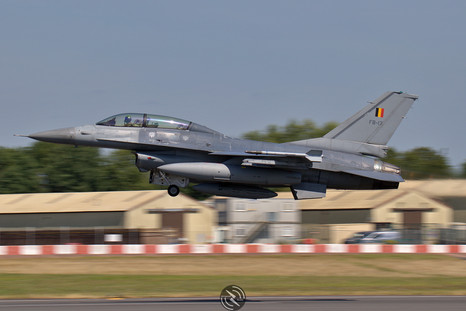













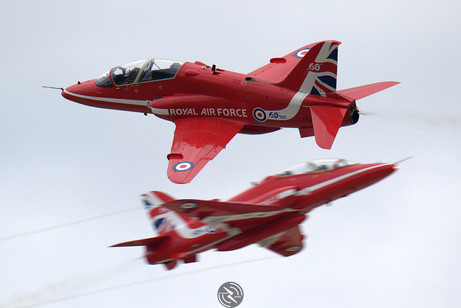



































































































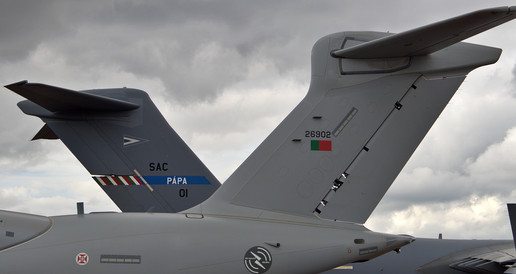



















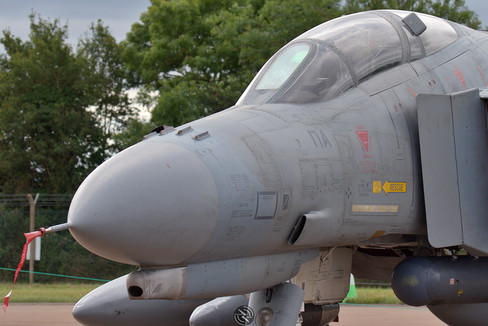























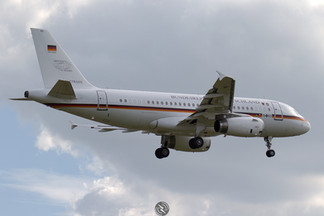







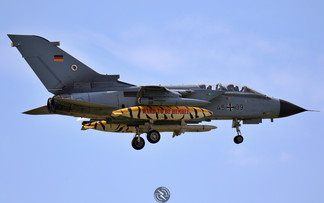

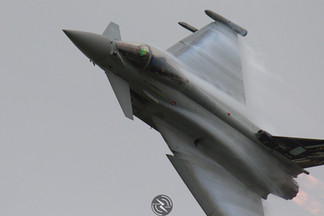





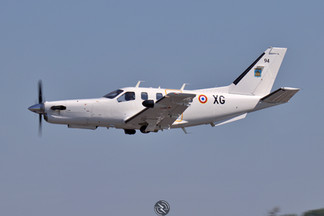





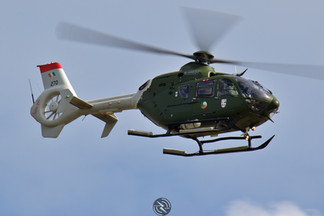








コメント